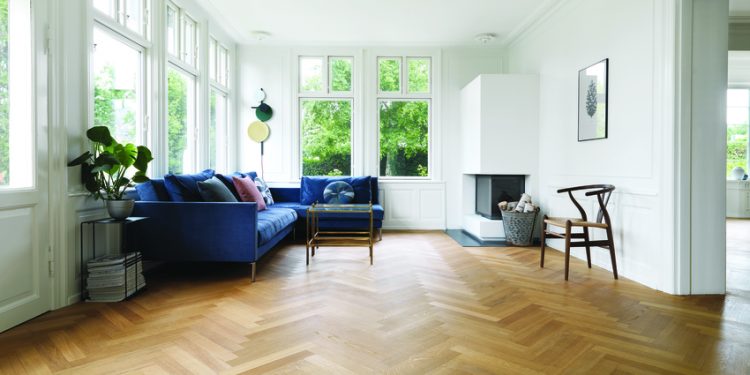How to care for your wood floor
Maybe you are prone to spring cleaning – but wonder how to treat your wood floor? Find here a few tips to help you.
The article continues below.
By Bente D. Knudsen
Cleaning a wood floor can be quite a challenge as there are several kinds of floor finishes, each determining how regular cleaning should be carried out and which product you should use.
The floor finish of the wood can be untreated, bleached using a lye treatment, oiled or lacquered.
Daily cleaning of all kinds of wood floors can be done with a vacuum cleaner; however, be careful not to scratch the floor with the vacuum head; make sure you are using the soft bristle setting.
The easiest to clean are the lacquered floors, as the varnish protects the wood – making it resistant to water and dirt.
All you need to do is vacuum it and wash it with any soap or detergent you would normally use (for example, Ajax).
If the floor has not been lacquered but instead bleached with lye, and/or oiled, then you must use a specialised product to clean it with and not your regular soap.
This is really important, as you will otherwise ruin the protective layer on the wood (the lye/oil has penetrated and saturated the wood thus protecting it). If you ruin this it will make the floor more sensitive to dirt and liquids.
To clean wood floors bleached with lye/oiled you must use a specially formulated wood soap, there are several different kinds depending on the treatment. You can ask your landlord what treatment your floors have had and what to use – and you can buy the product needed in a DIY shop or a shop selling paint and other home decor products.
If the wood floor does not have any finish but is untreated (as is the case in many old buildings and houses where the original wood floor has not been replaced), you must NOT use a normal soap or a specialised product meant for a bleached or an oiled floor.
Instead, use a specialised product for an untreated wood floor or, as many Danes do, use soap flakes, in Danish sæbe spåner, which can be bought in any supermarket.
The article continues below.
Recommendations for regular wood floor cleaning of non-lacquered floors – all wood types:
• Always work with two buckets: one bucket containing the solution of soapy water ( make sure you have the correct one according to the type of treatment your wood floor has been given). Use a second bucket with clean water to rinse the mop (change the water as needed). The two-bucket wash method prevents the floor from getting a greyish gleam caused by dirty water.
• An excessive amount of soap may leave visible footprints on your freshly washed floor. Simply clean the floor with pure, lukewarm water to remove the excess soap.
• Always clean the floor with a minimum amount of water, in order to leave as little moisture on the surface as possible.
• Use a quality sweep mop, a cotton yarn, or lint-free cotton cloths to clean the floor. Microfiber mops are mildly abrasive and will gradually wear down an oil finish.
• Always pass the mop/cloth in the same direction as the grains of the wood – i.e. follow the lengths of the wood’s grains rather than sweeping across them. This is especially important in untreated wood floors – it is easier to dissolve the dirt and stains this way.
Source: Derived from the wood cleaning brand WOCA, more information at wocadenmark.com about care and maintenance, or get information from any other brand that sells products for cleaning wood floors. Picture: PR Dinesen Planks: wood floor oak classic – Gentofte Villa


